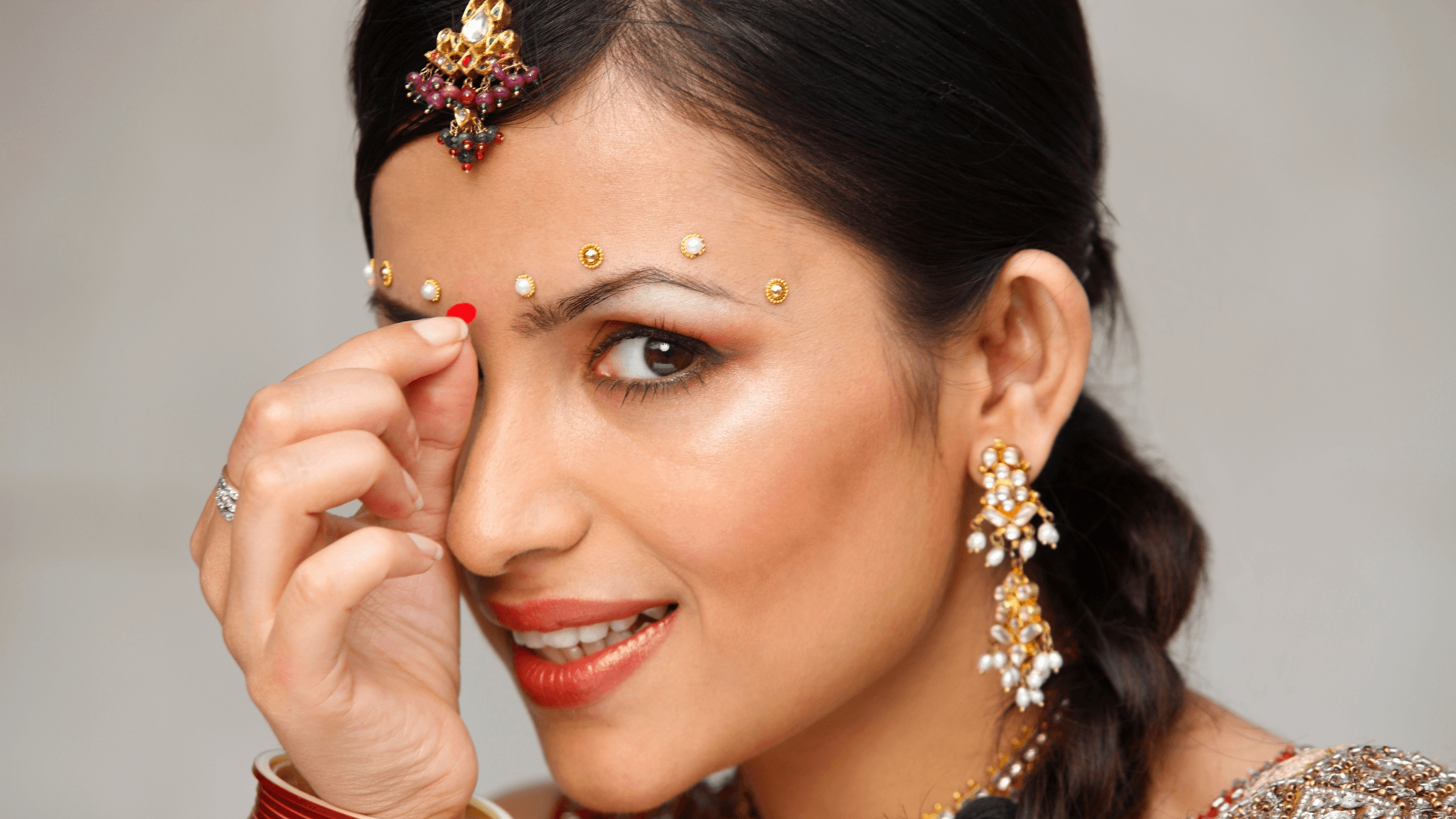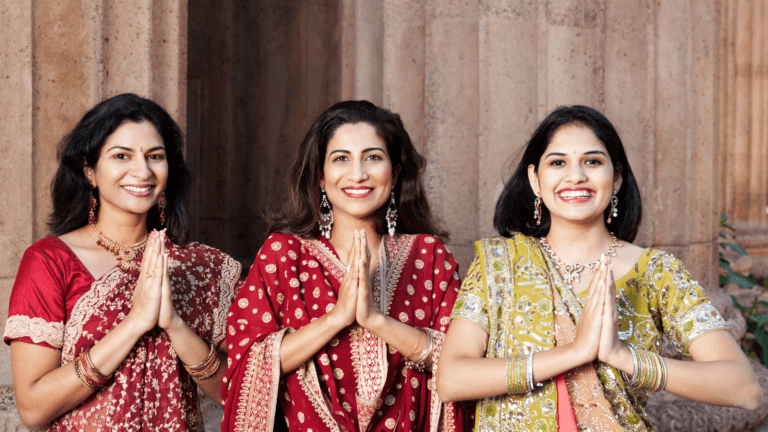The bindi, a small decorative dot often seen on the foreheads of Indian women, is much more than an accessory or fashion statement. Steeped in history, culture, and spirituality, the bindi holds immense significance in Indian tradition. While it has evolved in style and purpose over the centuries, the bindi remains an iconic symbol of Indian heritage.
In this blog, we’ll explore why Indians wear the bindi, its cultural and scientific significance, and how this age-old practice continues to resonate in modern times.
1. The Origin of the Bindi:
The word “bindi” comes from the Sanskrit word bindu, meaning “point” or “drop.” Historically, the bindi has been a marker of spiritual energy and a representation of the “third eye” in Indian culture.
Historical Background:
- The practice of wearing a bindi dates back to ancient Indian civilization.
- In Hinduism, the bindi symbolizes divine sight and spiritual awakening, connected to the Ajna chakra (third eye chakra).
- Traditional bindis were made using natural ingredients like turmeric, sandalwood paste, and vermilion (kumkum).
2. Cultural Significance of the Bindi:
The bindi is much more than a decorative element—it represents various cultural aspects of Indian society.
2.1. Marriage and Womanhood:
- Married Hindu women traditionally wear a red bindi as a mark of their marital status.
- It signifies love, prosperity, and devotion, often associated with Goddess Parvati, the Hindu deity of marriage.
- In certain regions, widows refrain from wearing the bindi as a mark of mourning.
2.2. Regional Variations:
- In South India, the bindi is commonly referred to as tilak or pottu.
- In Maharashtra, brides wear crescent-shaped bindis made from turmeric and vermilion.
- Tribal communities often use bindis made from natural dyes, reflecting their connection with nature.
2.3. Gender Neutrality in Tradition:
Historically, men also wore tilaks or bindis during rituals and ceremonies as a mark of wisdom and devotion.
3. Spiritual and Religious Importance:
In Hinduism and other Indian religions like Jainism and Buddhism, the bindi represents the third eye, a spiritual gateway to higher consciousness.
3.1. Activation of the Ajna Chakra:
- The bindi is placed between the eyebrows, where the Ajna chakra resides. This chakra is believed to be the center of intuition and enlightenment.
- Applying pressure or stimulating this spot through the bindi enhances focus and energy.
3.2. Symbol of Devotion:
- During religious ceremonies, bindis or tilaks are applied as a mark of reverence to deities.
- It signifies surrender to divine power and alignment with spiritual energies.
4. Scientific and Ayurvedic Relevance:
The placement of the bindi is not just symbolic but has a scientific basis rooted in Ayurveda.
4.1. Pressure Point Activation:
- The spot between the eyebrows, also known as the bhrumadhya, is a major nerve point. Applying a bindi or pressing this point stimulates blood circulation and relieves stress.
- It is believed to enhance mental clarity and concentration.
4.2. Cooling Effect:
- Traditional bindis made of sandalwood or turmeric paste have a cooling effect on the body, especially in hot climates.
- Kumkum, made from turmeric and slaked lime, has antibacterial properties.
5. The Evolution of the Bindi:
The bindi has transformed from a religious symbol to a global fashion statement.
5.1. Modern-Day Styles:
- Bindis are now available in various colors, shapes, and designs, often adorned with sequins and stones.
- Decorative stick-on bindis have replaced traditional paste or powder bindis for convenience.
5.2. Global Influence:
- The bindi has transcended cultural boundaries, becoming a popular accessory in global fashion.
- Celebrities and influencers worldwide have embraced the bindi, adding an Indian touch to their outfits.
5.3. Unisex Appeal:
- With changing trends, the bindi has become a gender-neutral accessory, often used in performances, festivals, and cultural celebrations.
6. The Bindi in Popular Culture:
The bindi has found its place in Bollywood, art, and international platforms.
6.1. Bollywood’s Love for the Bindi:
- Iconic actresses like Madhubala and Rekha have immortalized the bindi in their movies.
- Modern Bollywood divas continue to rock the bindi, blending tradition with contemporary fashion.
6.2. Representation in Art:
- The bindi has inspired paintings, murals, and fashion collections, showcasing its aesthetic appeal.
6.3. Festivals and Celebrations:
- The bindi is an integral part of Indian festivals like Navratri, Diwali, and weddings, symbolizing joy and tradition.
7. The Relevance of the Bindi in Modern Times:
Despite the advent of Western culture, the bindi has retained its charm and significance.
7.1. Cultural Identity:
- For Indians living abroad, wearing a bindi is a way to stay connected to their roots and heritage.
- It is a powerful symbol of pride and cultural representation.
7.2. Feminine Empowerment:
- The bindi is now being embraced as a symbol of feminine strength and individuality.
- Women use the bindi to celebrate their identity, irrespective of marital status or cultural norms.
Conclusion:
The bindi is more than just a dot—it is a celebration of India’s rich heritage, spirituality, and cultural diversity. Its timeless appeal lies in its ability to adapt to changing times while retaining its traditional essence. Whether worn as a mark of devotion or as a fashion accessory, the bindi continues to inspire and captivate people worldwide.
Next time you see someone wearing a bindi, remember the deep history and significance it carries. It’s not just a decorative element; it’s a story of faith, identity, and timeless tradition.





